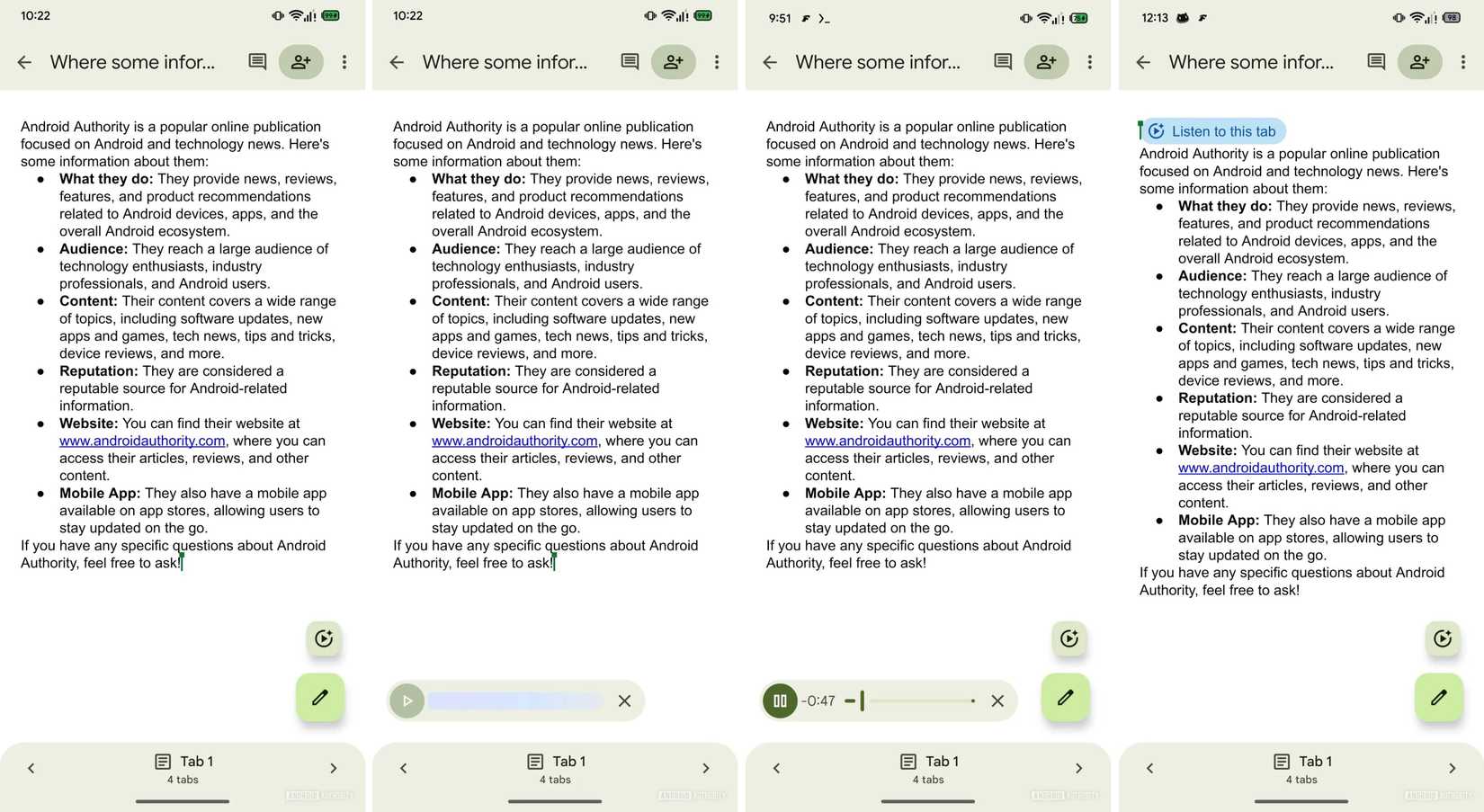Roughly two weeks ago, Google Docs gained a key feature that should make absorbing swaths of information an easier task. The tech giant gave the platform the ability to read your documents out loud, benefiting those who prefer auditory listening over reading.
The text-to-speech model is currently limited to Google Docs on the web/desktop, though that might soon change.
In its initial announcement, Google didn’t say if and when the feature would make its way to the Google Docs app. Code sleuth AssembleDebug, however, found that support for the Android app is imminent, and he shared his findings in an Android Authority report.
The app’s latest v1.25.341 build offers a peak at code that suggests an identical text-to-speed model is in-development for Google Docs on Android. Said code was manually enabled, and well, we pretty much know what the feature will look like and how it’ll function.
Here’s how the feature will work
If and when the functionality does roll out, it will appear as a play icon FAB right above the app’s edit (pencil icon). Tapping it triggers the model, which then reportedly takes a few moments to process the document’s text using Gemini. This is indicated by the presence of a small pill-shaped media player with its timeline grayed out. Once processed, the same media player appears with a full timeline, complete with a progress bar.
Similar to the feature’s implementation on the web, it is very likely that users will be able to choose different voice styles and playback speeds, though support for it could not be found in code. Elsewhere, the option for authors to pre-add audio buttons (a feature available on the web version) didn’t make the initial cut either. However, it’s noteworthy that, as seen in the last (extreme right) screenshot above, any audio buttons or chips added to a document on the web appear and function properly on the Android app, essentially suggesting that the core functionality is already in place.
It’s likely that the missing features will be ported over to Android closer to the feature’s public release.


